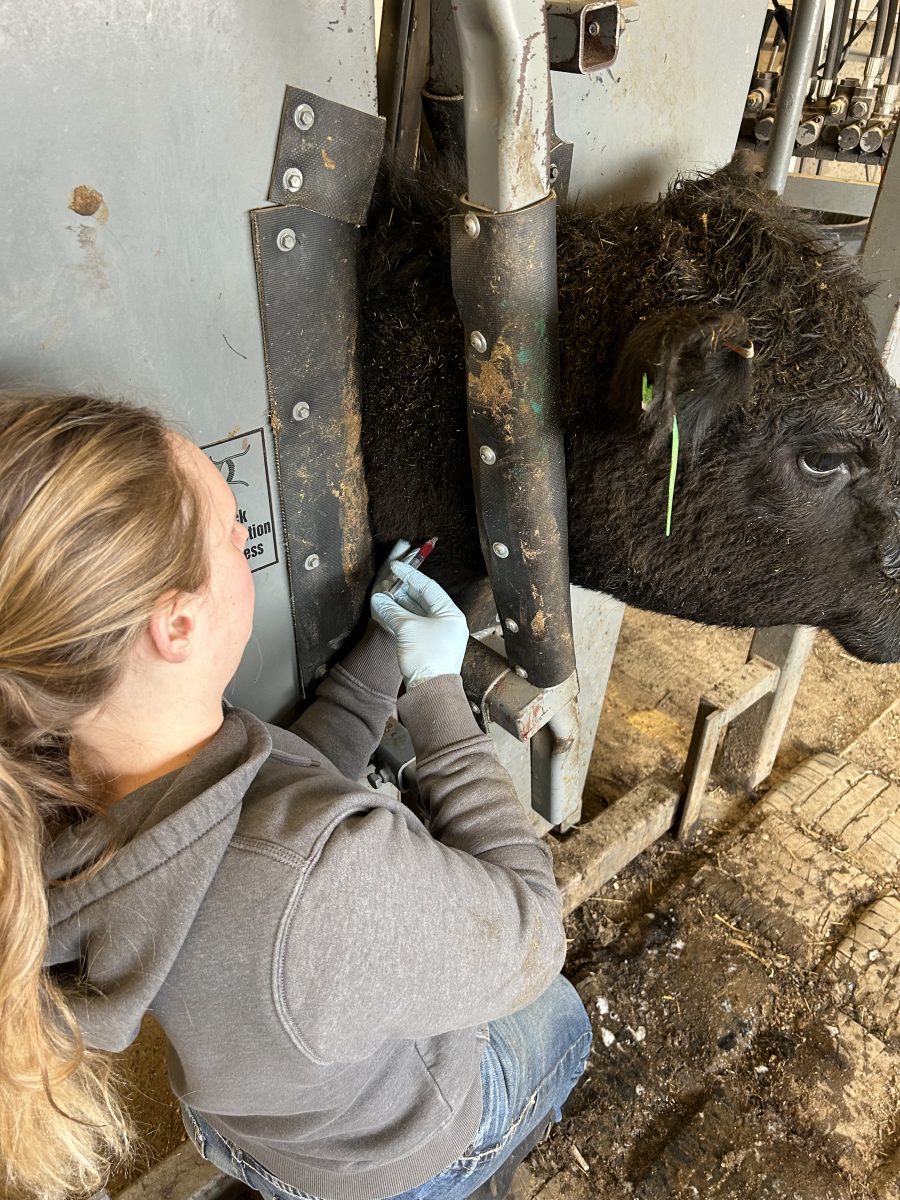Hobo Days: Then Vs. Now
October 18, 2005
Lucinda Albers
It is the event that most students look forward to. Sometimes it’s the reason high school graduates decide to continue their education at SDSU. It’s tradition. It’s crazy. It’s fun.
It’s Hobo Days. And it’s here.
You Can’t Have a Present Without a Past
The Hobo Day celebration can be traced back to 1907 with the origination of the “Nightshirt Parade.”
A 1909 SDSU (then known as South Dakota State College) yearbook described the night as a ploy to “stir up enthusiasm among some of the dormant members of the college and the people of Brookings…”
For the “Nightshirt Parade,” male students dressed in nightshirts and the women draped themselves in sheets as they started a bonfire in the middle of campus.
Students grew together and sang songs and college cheers as well as gave speeches as they lit torches and lined up behind the band to make their way toward town. They were supposed to meet the opposing team (Dakota Wesleyan) at thetrain depot, but they were late and didn’t end up coming until the next morning.
Around 1912 it was suggested that the “Nightshirt Parade” be named Hobo Day.
The next year, the Industrial Collegian staff asked for a change of name to “shift towards a more meaningful and historically correct focus than on bums.”
In 1914, newly appointed President Ellwood C. Perisho wanted to change the name to “Dakota Days” but it was useless, Hobo Days had stuck. (Dakota Days later became the name of SDSU’s rival USD’s homecoming week)
In 1924, Hobo Day was almost lost as the Industrial Collegian reported that authorities said it was “undignified and unseemly for college women to roam the streets of Brookings draped in sheets.”
Nonetheless, students stuck to the tradition and Hobo Day became more successful each year.
It Just Keeps Going
Throughout the years, many different traditions have developed for Hobo Week.
“Although I haven’t been back in a while, I’m sure it has changed,” says Lisa Klein, class of 2000.
Klein, originally Kurtz, has seen quite a few Hobo Days, as her parents, grandparents, aunts anduncles and younger brother have all attended SDSU.
“The whole week was designed to lighten spirits,” says Klein’s father, Jim Kurtz, who graduated in 1967.
At one point, all classes after 10 a.m. were cancelled and students celebrated throughout the whole week.
There was also a no-shaving rule for all male students.
“All the guys grew beards,” says Kurtz. “If they didn’t, they had to buy a shaving license.”
Men let beards grow one week, which grew into two and three weeks. Eventually by the late 1930s, the time stretched to four weeks.
There were often initiation ceremonies and several activities distinguishing the difference between upper and lower classes.
“It was very archaic,” says Klein’s mother, Ethel Kurtz, who graduated in 1966. “The freshman had to wear beanies to signify [their status].”
Hobo Day also had more formal events, such as the Homecoming Dance.
“It was very formal,” says Jim Kurtz. “It was very dressed up with corsages, the whole thing.”
Dressing to fit the theme was also more popular at one time.
“Hobos were a real big deal then,” says Jim Kurtz. “You were really encouraged to dress like Hobos.”
Of course, the parade and football game have always been a popular part of the week.
Building floats has always been a time for students to get involved in school spirit through clubs andin their colleges.
“Float building began modestly and grew increasingly elaborate until its heyday in the 1940s and 50s,” writes Amy Dunkle in her book, The College on the Hill.
Along with the game and parade, the SDSU band has always been a highlight of Hobo Day.
“The band wasn’t as big as it is now, but it was a big thing then, too,” says Ethel Kurtz.
The week isn’t just for SDSU students either.
“I enjoy having friends from other schools come up and spend the weekend for Hobo Days,” says Klein’s younger brother, sophomore Matthew Kurtz.
Events May Change, But Feelings Will Stay the Same
No matter how many times Hobo Day changes, it will always mean the same thing to each generation.
“It’s a reason to have fun,” says Klein.
Even if you don’t decide to partake in any of the events, there are many things that you can enjoy, such as the parade and football game.
“I always enjoyed just sitting on the lawn with friends, watching the parade,” says Klein
Friends and the social aspect will always be a large part of the week.
“It’s a chance to just relax and hang out with all of your old and new friends,” says Matthew Kurtz.
Even though friends have always come together for the school event, family is also recognized.
“I’ve gone to pretty much every Hobo Day since I was born,” says Matthew Kurtz.
Ethel Kurtz is from Brookings and Jim is from Elkton, so they have always been involved in the tradition. Every year was a get-together for the family, and they still come for the parade and take Matthew out for dinner, just as they did with Lisa.
But whether it’s friends or family that you enjoy the most, all can agree that school spirit is shared by everyone.
“In general, it meant pride for the school,” says Ethel Kurtz.



















